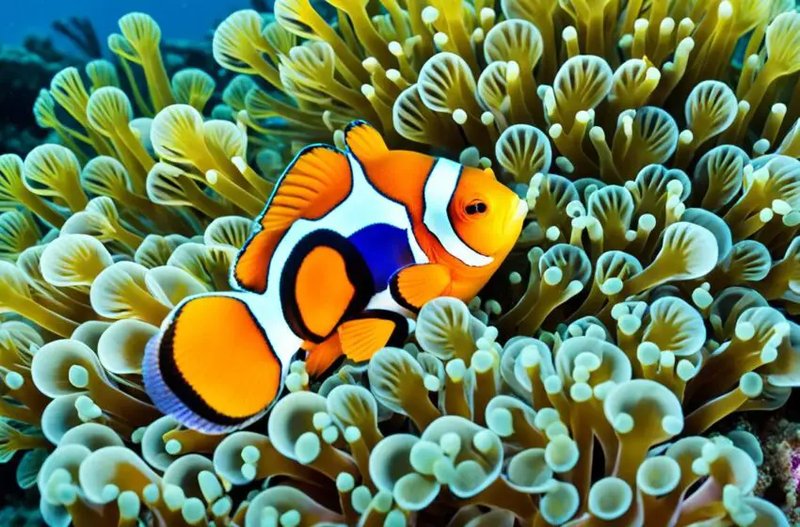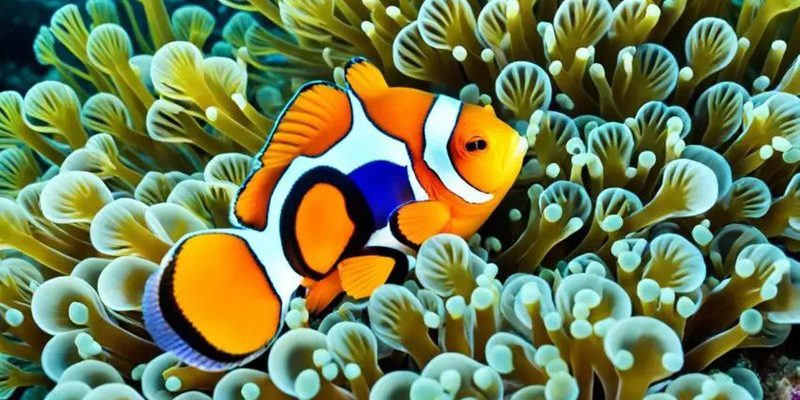
If you’re just starting out, you’re probably wondering what it takes to create the perfect environment for these lively little swimmers. It’s not just about adding water and feeding them; it’s about creating a thriving ecosystem that mimics their natural habitat. So, grab your coffee, and let’s dive into the world of breeding clownfish!
Understanding Clownfish Behavior and Biology
Before you jump into the breeding process, it’s crucial to understand clownfish themselves. These fish are not just pretty faces; they have fascinating social structures and behaviors. Clownfish usually live in pairs and form a strong bond with their anemone host. This bond isn’t just for shelter; it’s for protection against predators and to keep them safe while they lay their eggs.
When breeding, you’ll notice the male clownfish will often perform a dance around the female to trigger her to lay eggs. This courtship behavior is essential as it helps establish their relationship and ensures that the female is ready to spawn. You might find it helpful to watch some videos online to see these behaviors in action—seeing how they interact can really clarify things.
In captivity, it’s crucial to replicate these social dynamics. If you have two clownfish, make sure they are bonded. Introducing a new fish into the tank can disrupt their harmony, leading to stress or aggression. Keeping your clownfish happy and healthy is the first step toward successful breeding.
Setting Up the Perfect Breeding Environment
Creating the right habitat is key to breeding clownfish successfully. You’ll want to ensure your aquarium mimics their natural environment as closely as possible. Here are some essential elements to consider:
- Tank Size: A minimum of 20 gallons is recommended for a pair of clownfish. Bigger is often better, as it provides more space for them to swim and explore.
- Water Quality: Clownfish thrive in clean, saltwater conditions. Invest in good filtration and regularly monitor pH levels, salinity, and ammonia levels to keep the water just right.
- Anemones: While not strictly necessary, having an anemone can help mimic their natural habitat. It gives them a place to hide and breed, making them feel more secure.
- Temperature and Lighting: Keep the water temperature between 75°F and 82°F and ensure your tank has a light cycle of about 12 hours on, 12 hours off to stimulate natural day/night rhythms.
Here’s the thing: if you don’t get the environment right, your clownfish may not feel safe enough to breed. Think of it like throwing a party in a messy room—it’s just not as inviting.
Feeding and Nutrition for Breeding Clownfish
Feeding your clownfish the right diet plays a crucial role in their health and ability to breed. A balanced diet improves their overall health and enhances their breeding hormones, making them more likely to spawn.
Consider offering a mix of:
- Flake Foods: High-quality flake food designed for marine fish will provide essential nutrients.
- Frozen Foods: Brine shrimp or mysis shrimp are great options that clownfish love.
- Spirulina: Adding some spirulina can enhance their color and improve their immune system.
Like any good meal prep, variety is the spice of life! Rotate their diet to keep them interested and ensure they’re getting all the nutrition they need. You should also avoid overfeeding, as this can lead to poor water quality.
Recognizing the Signs of Breeding
So, how do you know when your clownfish are ready to breed? It can be subtle, but a few clear signs might help you feel more confident in your breeding endeavor.
First, watch for changes in their behavior. When they start cleaning a specific spot in the tank, often near their anemone or a flat rock, it’s a sure sign they are preparing to lay eggs. They might also start swimming more vigorously and chasing each other.
The female will eventually lay her eggs, which typically appear as small orange or yellow balls. They will stick to the surface where they were laid. The male clownfish will then take over the responsibility of guarding and aerating the eggs, ensuring they stay healthy until they hatch.
If you see all these signs, it’s time to prepare for the big event!
What to Do After the Eggs Are Laid?
Once your clownfish have laid the eggs, it’s essential to know how to care for them. This part is crucial because it can determine whether your baby clownfish make it to adulthood. Here’s what to keep in mind:
- Water Quality: Keep the water pristine. Make sure to keep up with your regular water quality checks during this period.
- Lighting: Lower the tank’s lighting slightly to help protect the eggs from too much light, which can be stressful.
- Egg Monitoring: Keep an eye on the eggs for about 6 to 10 days. They will change color as they develop, which is a good sign!
Also, remember that once the eggs hatch, the baby clownfish (known as fry) will need a different environment for their growth. You’ll want to transfer them to a nursery tank where they can grow without the risk of being eaten by adult fish.
Common Challenges and How to Overcome Them
While breeding clownfish can be rewarding, it’s not without its challenges. Here are a few common issues you might encounter and how to tackle them head-on:
1. Aggression: If you add new clownfish, they might become territorial. Always introduce new fish carefully and be prepared for some initial squabbling.
2. Poor Water Quality: This is the big one. If your clownfish lay eggs and the water isn’t ideal, the eggs may die. Regular water changes and monitoring are critical.
3. Fry Survival: Not all fry will survive, even in ideal conditions. Having a dedicated nursery tank can help increase their chances, but it’s not foolproof.
If you run into problems, don’t get discouraged. Many breeders have faced similar hurdles, and learning to navigate them is part of the journey.
Final Thoughts on Clownfish Breeding
Breeding clownfish in captivity might seem like a daunting task at first, but with a little patience and dedication, it can be a fantastic experience. By understanding their behavior, providing the right environment, and addressing challenges as they arise, you can set yourself up for success. Just remember, it’s all about creating a happy home for your clownfish and being attentive to their needs.
So, whether you’re housing a pair of clowns or just daydreaming about your future aquarium, know that you’ve got the basics covered. Happy breeding!

